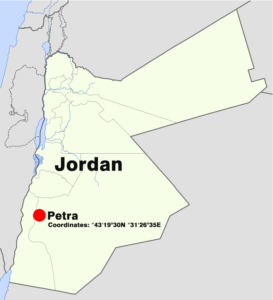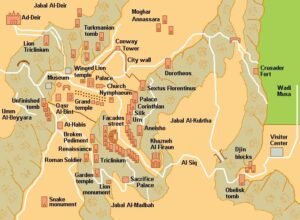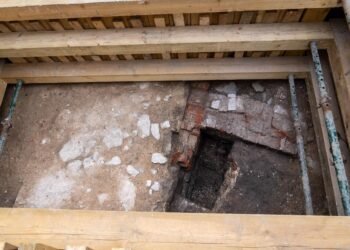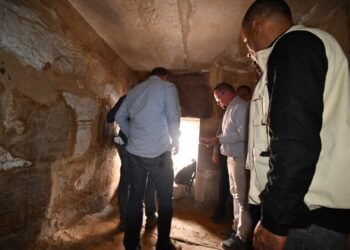Petra is an ancient city located in present-day Jordan, known for its remarkable rock-cut architecture and historical significance. Often referred to as the “Rose City” due to the color of the stone from which it is carved, Petra is a UNESCO World Heritage site and one of the New Seven Wonders of the World.
Established around the 6th century BCE by the Nabataean civilization, Petra served as an important trading hub, strategically positioned along ancient caravan routes. Its prosperity was largely based on its control over the trade of valuable commodities, such as frankincense, myrrh, and spices.
Related: Petra Virtual Tour
What makes Petra truly awe-inspiring is its impressive rock-cut architecture. The city is nestled within a narrow gorge called the Siq, which serves as the main entrance. As visitors make their way through the winding Siq, they are greeted by the iconic Treasury, or Al-Khazneh, one of Petra’s most iconic structures. This elaborately carved façade served as a tomb and showcases intricate details and stunning craftsmanship.

Beyond the Treasury lies a vast archaeological site, where various structures and tombs are scattered throughout the landscape. The most famous among them is the Monastery, or Ad-Deir, a massive monument perched on a hilltop. It is the largest carved structure in Petra and offers panoramic views of the surrounding area.
Petra is also home to a Roman-style theater, which could accommodate thousands of spectators, and a range of temples, royal tombs, and residential buildings. The ancient city’s architecture is a testament to the blending of Nabataean, Hellenistic, and Roman influences, reflecting the multicultural nature of the region during its heyday.
In addition to its architectural wonders, Petra possesses a rich cultural and historical heritage. The Nabataeans, an industrious people who built and inhabited the city, left behind a legacy that is still being uncovered by ongoing archaeological research. The ruins and artifacts found at Petra provide insights into the Nabataean way of life, their customs, and their interactions with other ancient civilizations.
Petra’s remote location hidden within the Jordanian desert adds to its mystique and allure. Exploring the ancient city and its surrounding rugged landscapes offers a unique experience, allowing visitors to step back in time and marvel at the ingenuity and creativity of those who once called Petra home.
Today, Petra remains a significant tourist attraction and continues to captivate visitors from around the world. Its remarkable architectural beauty, historical importance, and cultural significance make it a must-visit destination for those interested in ancient civilizations and archaeological wonders.
























Comments 0